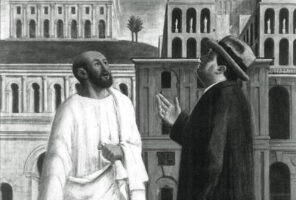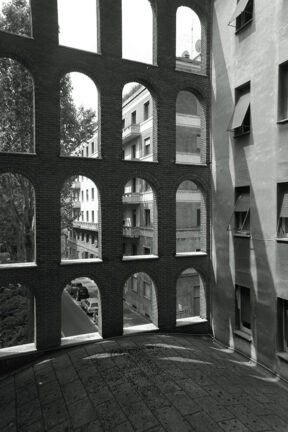Joost Hovenier, Local Hero
Obituary, published on: website De Architect, 2016
 Unexpectedly, Amsterdam architect Joost Hovenier has passed away. Joost graduated from the Academy of Architecture after first completing the MTS and HTS. He worked at Rudy Uytenhaak and UN Studio. In 1995, he and Jan Peter Wingender Joost founded the Amsterdam office Wingender Hovenier, which has continued as Office Winhov together with Uri Gilad since 2012.
Unexpectedly, Amsterdam architect Joost Hovenier has passed away. Joost graduated from the Academy of Architecture after first completing the MTS and HTS. He worked at Rudy Uytenhaak and UN Studio. In 1995, he and Jan Peter Wingender Joost founded the Amsterdam office Wingender Hovenier, which has continued as Office Winhov together with Uri Gilad since 2012.
In 2006, the firm completed the Loodsen project on the Oostelijke Handelskade in Amsterdam. Although the project was never published in the Netherlands, it was nominated several times for awards in the Netherlands and abroad and was, for instance, included in The Phaidon Atlos of 21st Century World Architecture. The office then steadily built on an oeuvre of serial housing that stands out for its restrained use of brick as a facade material. Most of this work was created in inner-city locations.

I got to know Joost when we travelled together more or less by chance. We shared an interest in architects from the ‘shadow canon’ of architecture: we went with a group of colleagues to Paris to study the work of Fernand Pouillon, with Jeroen Geurst to France for the cemeteries of Edwin Lutyens, with Ids Haagsma and Hilde de Haan we drove past the houses of the Bossche School architect Jan de Jong, and we flew to Milan in preparation for our joint article on Giovanni Muzio’s Sant’Angelo monastery. Joost came to Liverpool to witness the opening of my Bluecoat building where he complimented me affably but also provided me with stern comments. We were both invited to contribute to a new model district of the German Werkbund in Berlin and made hours-long drives on the Autobahn.
Especially on those car journeys, I got to know Joost as a collector. He collected facts, insights and anecdotes about architecture, but also about jazz, cycling, Citroëns and even espresso beans when it was appropriate. I was temporarily included in Office Winhov’s network. Constantly, Joost was in contact with his partners. Via WhatsApp, photos and messages flew back and forth. I experienced the boyish intensity with which Joost lived his profession and how he constantly shared his enthusiasm and experiences. Joost practised his profession as a hobby.
Joost’s practice did not consist of designing buildings alone. He took the initiative for the digital publication Local Heroes. Based on a fixed layout, it offers guest authors the opportunity to spread their fascinations to architects who never made it into the official historiography. The idea is a marvel of simplicity. The pdfs can be downloaded via his agency’s web server. The PDFs are printable in A4 format and often contain practical information for visiting and further study. Through an ever-growing LinkedIn group, Joost let me know when another copy was ready.
Sometimes I got unexpected messages from Joost. Often he had then found something I needed to know about. The last e-mail contained a scan of a Giovanni Muzio painting. It was a depiction of our common hero in conversation with Vitrivius against the backdrop of an imaginary cityscape with buildings by historical masters and Muzio himself. It says a lot about Joost’s desire to take position, to relate to the people he admired. We had fun with the painting (we wanted one ourselves), because we knew that reality is much less heroic.

Looking for original drawings by Muzio, we once ended up at Archivio Storico Giovanni Muzio. The institute with this sweeping name turned out to consist of a wooden drawing cabinet in a tiny room under a damp staircase of Muzio’s grandson’s office. Calques nearly a century old were laid criss-crossed on the table by Giovanni Jr. Crouched on the floor, Joost took pictures with his mobile phone. We found out that Muzio’s so meticulously detailed buildings had been realised without detailled construction drawings. Casually, his grandson told us that the brick cladding was held together by rubble. You don’t need perfect drawings for perfect buildings, was our lesson again in Milan.
Recent designs by Office Winhov explored new directions. Joost was full of the new precast concrete buildings to be built in Eindhoven and Zurich, the conversion of the W-Hotel in Amsterdam and the new commission for the restoration of the Trippenhuis. With Joost a pensive professional with a keen sense of judgement is lost . This Local Hero was far from finished with his work. Joost Hovenier lived to be 52 and leaves behind a wife and two children.